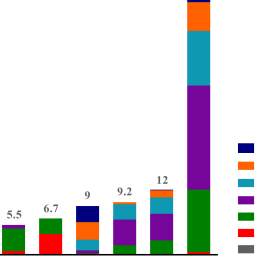Prenatal developmental toxicity testing of petroleum substances using the zebrafish embryotoxicity test
Main Article Content
Abstract
The present study evaluates the applicability of the zebrafish embryotoxicity test (ZET) to assess prenatal developmental toxicity (PDT) potency of the DMSO-extracts of 9 petroleum substances (PS), with variable polycyclic aromatic hydrocarbon (PAH) content, and 2 gas-to-liquid (GTL) products, without any PAHs but otherwise similar properties to PS. All PS extracts induced concentration-dependent PDT as quantified in the ZET and this potency is associated with their 3-5 ring PAH content. In contrast and as expected, GTL products did not induce any effect in the ZET. The potencies obtained in the ZET correlated with those previously reported for the embryonic stem cell test (EST) (R2 = 0.61), while the correlation with potencies reported in in vivo studies was higher for the EST (R2 = 0.85) than the ZET (R2 = 0.69). Combining the results of the ZET with those previously reported for the EST (Kamelia et al., 2017), the aryl hydrocarbon (AhR) CALUX assay (Kamelia et al., 2018), and the PAH content, ranked and clustered the test compounds in line with their in vivo potencies and chemical characteristics. Our findings indicate that the ZET does not outperform the EST as a stand-alone assay for testing PDT of PS, but confirm the hypothesis that PAHs are the major inducers of PDT by some PS, while they also indicate that the ZET is a useful addition to a battery of in vitro tests able to predict the in vivo PDT of PS.
Article Details
Articles are distributed under the terms of the Creative Commons Attribution 4.0 International license (http://creativecommons.org/licenses/by/4.0/), which permits unrestricted use, distribution and reproduction in any medium, provided the original work is appropriately cited (CC-BY). Copyright on any article in ALTEX is retained by the author(s).


